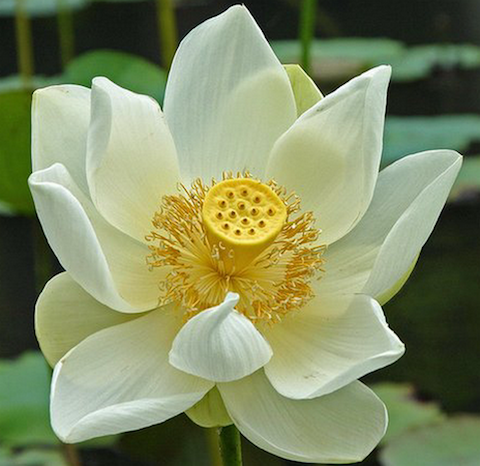by Lynnda
 |
| West Conservatory Complex, Longwood Gardens website |
|
This fall, while on a trip to reacquaint with long-lost friends, I had the opportunity to visit a section of Longwood Gardens in Kennett Square, PA, in the outskirts of Philadelphia.
The garden was originally begun in the early 1700s by a Quaker family who purchased the land from William Penn. In 1906, the farm was purchased by Pierre du Pont to preserve the arboretum begun by Joshua and Samuel Peirce over 100 years earlier. Read more about this incredible park here:
The Story of Longwood Gardens
The gardens are immense, and since I had limited time to visit, I chose to focus on the Outdoor Waterlily Display. Currently there are 5 shallow pools that grow water lilies from around the world. The lotus plant really interested me, there are none in the Seattle Japanese Garden, but so many of the stone lanterns have a lotus blossom on the top. I was intrigued to see a real lotus plant. Although it wasn't blooming during my visit, several of the seed pods were visible. I had seen them in floral arrangements and didn't know what they were. They are the brown pods sticking above the blue-green leaves in the photo below. The plant lives in murky pond water, but the flower is pure and beautiful.
 |
| Longwood Gardens Lotus plant with seed pods LLaurie 9/12 |
|
The lotus flower can range in color from pure white to lavender, pale blue or pink In the picture below, you can see the seed pod as part of the blossom. From religionfacts.com, "The roots of a lotus are in the mud, the stem grows up through the
water, and the heavily scented flower lies pristinely above the water, basking in the sunlight. This pattern of growth signifies the progress of
the soul from the primeval mud of materialism, through the
waters of experience, and into the bright sunshine of enlightenment."
 |
Lotus blossom by matze_ott
|
The giant water-platters, pictured below, were first hybridized at Longwood Gardens. The winter weather in Philadelphia is too harsh for the plants to survive, so in February each year, new plants are started from seeds collected the previous summer. By mid summer, they have grown to over 6 feet wide and can hold up to 100 pounds if the weight is evenly distributed on the platter. They are incredible to see and remind me of many children's storybook illustrations about frogs and pond life. I would love to have seen a small child lounging on one of the platters!
Water-platters, L. Laurie 9/12
 |
| Water Lilies, L. Laurie, 9/12 |
 |
| Water-Platter Close-up, L. Laurie, 9/12 |
The sign below explains the growth of the Water-Platter plants. One plant will produce many leaves, and they grow to maximum size in 4 to 5 weeks. The flowers are spectacular, have a very short life and bloom at night. The first night they are creamy white with a strong pineapple fragrance. The flower is 10-12 inches across and resembles a large magnolia flower. This is a female flower, and it closes up during the day. The second night, it is a pinkish color and is now a male flower. That's as long as the flower lives. What a wonderful opportunity to have seen these magnificent plants in bloom!
 |
| Sign at Water Lily Park, L. Laurie. 9/12 |
Walking to the Water Lily Display required walking through a Bonsai display. The Crepe Mertle was in full bloom and was so beautiful. I don't recall seeing these plants in the Pacific Northwest, but the countryside in Maryland had many in bloom, and they were a joy to see.
 |
| Crepe Mertle Bonsai, L. Lauire, 9/12 |
When leaving Longwood Gardens, we walked through the Children's garden, and this dragon was guarding the entrance. This park has something for everyone, and should you find yourself anywhere in the Philadelphia area, be sure to take the time to visit. It will not disappoint.










No comments:
Post a Comment
Note: Only a member of this blog may post a comment.